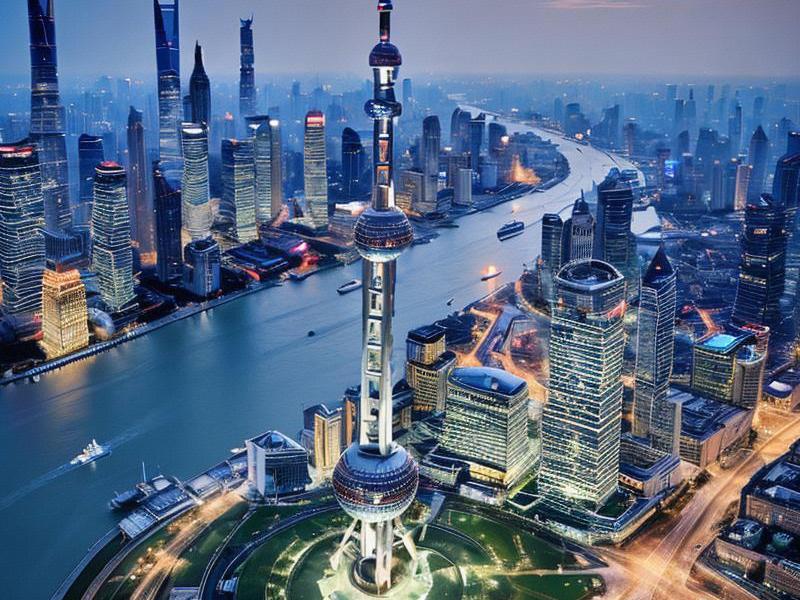This article delves into the remarkable transformation of Shanghai, exploring its journey towards becoming a global hub for innovation and sustainability. It highlights the city's efforts in urban development, economic growth, and environmental protection, showcasing how Shanghai is setting new benchmarks in modern city planning.

Shanghai, the vibrant metropolis on the banks of the Huangpu River, has long been a symbol of China's rapid economic rise. Over the past few decades, this city has undergone a profound transformation, evolving from a bustling port town into a global powerhouse of innovation and sustainability. Today, Shanghai stands as a testament to the harmonious coexistence of economic progress and environmental stewardship.
The journey of Shanghai's transformation is nothing short of extraordinary. In the late 20th century, the city was primarily known for its industrial base and manufacturing prowess. However, as China embarked on its reform and opening-up policy, Shanghai seized the opportunity to reinvent itself. The government launched a series of ambitious urban development projects aimed at modernizing the city's infrastructure, attracting foreign investment, and fostering a thriving business environment.
One of the most significant milestones in Shanghai's transformation was the establishment of the Pudong New Area in the early 1990s. This vast expanse of land on the eastern side of the Huangpu River was developed with the vision of creating a world-class financial and commercial hub. Today, Pudong is home to some of the tallest skyscrapers in the world, including the iconic Oriental Pearl Tower and the Shanghai Tower, which stands as the tallest building in China and the second-tallest in the world.
The rapid urbanization of Shanghai has brought about significant economic growth. The city has become a magnet for multinational corporations, startups, and financial institutions, making it one of the most important economic centers in Asia. The Shanghai Stock Exchange, one of the largest stock exchanges in the world, plays a crucial role in facilitating capital raising and investment opportunities for businesses.
爱上海同城对对碰交友论坛 However, Shanghai's success story is not just about economic growth. The city has also made remarkable strides in environmental protection and sustainability. Recognizing the challenges posed by rapid urbanization, the government has implemented various initiatives to promote green development and reduce environmental impact.
One of the key strategies employed by Shanghai is the promotion of renewable energy sources. The city has invested heavily in solar and wind power projects, aiming to increase the share of clean energy in its energy mix. Additionally, Shanghai has been actively promoting energy-efficient technologies and practices in industries, buildings, and transportation.
Another important aspect of Shanghai's sustainability efforts is waste management. The city has implemented comprehensive waste sorting and recycling programs, encouraging residents and businesses to reduce, reuse, and recycle waste. Shanghai has also invested in advanced waste treatment facilities, such as waste-to-energy plants, to minimize landfill usage and reduce greenhouse gas emissions.
Transportation is another area where Shanghai has made significant progress in promoting sustainability. The city has developed an extensive public transportation network, including subways, buses, and ferries, providing convenient and affordable travel options for its residents. The expansion of the metro system has been particularly noteworthy, with multiple new lines being added in recent years to improve connectivity and reduce traffic congestion.
爱上海同城419
In addition to public transportation, Shanghai has also been promoting the use of electric vehicles (EVs) to reduce air pollution and carbon emissions. The city has established a robust charging infrastructure and offers various incentives, such as subsidies and tax breaks, to encourage the adoption of EVs. As a result, Shanghai has become one of the leading cities in China for EV adoption, with a growing number of EVs on its roads.
Urban greening is another important component of Shanghai's sustainability efforts. The city has launched numerous initiatives to increase green spaces and improve air quality. Public parks, green belts, and rooftop gardens are now scattered throughout the city, providing residents with opportunities to enjoy nature and relax in a peaceful environment. Shanghai has also been planting trees along streets and in urban areas to crteeaa more pleasant and sustainable living environment.
Despite these achievements, Shanghai faces several challenges in its journey towards sustainability. One of the major challenges is managing the city's rapid population growth and urbanization. As more people move to Shanghai in search of better opportunities, the demand for housing, infrastructure, and services continues to rise. Balancing economic development with social equity and environmental protection remains a critical task for the city.
夜上海最新论坛 Another challenge is addressing the issue of air pollution. Although Shanghai has made significant progress in reducing air pollution through various measures, the problem persists due to factors such as vehicle emissions, industrial activities, and weather conditions. The city needs to continue implementing stricter emission standards and promoting cleaner technologies to further improve air quality.
Furthermore, Shanghai must also address the challenges posed by climate change. Rising sea levels, extreme weather events, and other climate-related risks pose significant threats to the city's infrastructure, economy, and residents. Shanghai needs to adopt proactive measures to enhance its resilience and adaptability to climate change, such as improving flood defenses, developing climate-resilient infrastructure, and promoting sustainable urban planning.
In conclusion, Shanghai's transformation is a remarkable example of how a city can achieve economic growth while prioritizing sustainability. Through its efforts in urban development, economic growth, and environmental protection, Shanghai has set a new benchmark for modern city planning. However, the city must continue to address the challenges it faces and strive for continuous improvement to ensure a sustainable future for its residents.
As Shanghai continues on its journey of innovation and sustainability, it serves as an inspiration for other cities around the world. By learning from Shanghai's experiences and best practices, other cities can also embark on their own paths towards sustainable development, creating a better and more sustainable future for all.